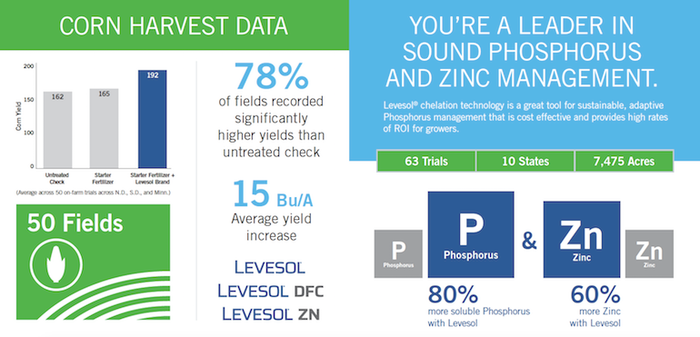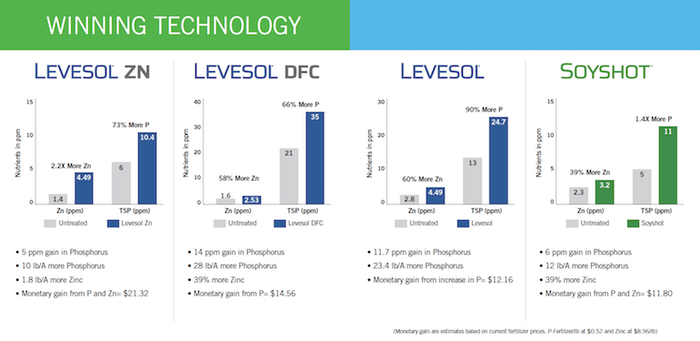March 4, 2019

Sponsored Content
Phosphorus is a key essential nutrient necessary to optimize healthy plant growth and yields. However, research shows that more than 50 percent of production acres are deficient in phosphorus.
Phosphorus is known for being a fixed macro-nutrient, which means it can’t easily move from soil to plant. Eighty-three percent of growers indicated they are concerned about phosphorus unavailability in their soils, and their increased fertilizer usage reflects those concerns. Each year an estimated 47 million tons of phosphate fertilizer is applied to fields globally to the tune of $41 billion. While we’re seeing an increase in the amount of phosphate fertilizer used, current phosphorus efficiency in grains is estimated to be less than 10 percent.
“Farmers are currently putting a lot of phosphorus on their fields, but the plant is only able to utilize a fraction of it,” says Steve Carlsen, Levesol and Crop Enhancement Manager with West Central Distribution. “Only one out of six growers are using a phosphorus efficiency product to help maximize that fertilizer uptake. This leaves a significant opportunity for both retailers and their growers to increase their yields and ROI for their business.”
The Phosphorus Project
In 2018, West Central Distribution launched a groundbreaking research project, called the Phosphorus Project, designed track how the right technology can help enhance phosphorus nutrient efficiency. Partnering with Climate FieldView™, West Central used digital technology to assess fields and determine the uptake rate of phosphorus and micronutrients throughout the growing season.
“Our retailer clients and their growers enrolled in the Phosphorus Project were challenged with using more efficient phosphorus management solutions,” Carlsen says. The Phosphorus Project enrolled 76 farmers, and 101 fields, in the 2018 challenge. Phosphorus availability on more than 7,400 acres in multiple states were monitored throughout the growing season using digital ag tools.
To participate, growers used Climate Fieldview to monitor their fields throughout the growing season, and ran trials using starter fertilizers like Levesol®, Levesol® Zn or Paralign®, against a control site using a local starter fertilizer.
The Results
Cumulative soil tests results show that when the Levesol family of products are incorporated into the starter fertilizer, phosphorus uptake into plants increased by an average of 80 percent, which equates to roughly $8.32 per acre. Micronutrients can also become fixed by phosphorus in the soil, so growers tracked the uptake of zinc as well. The study measured a 60 percent increase of zinc available to crops, which totaled about $8.96 per acre.

The bottom line for participants in the Phosphorus Project is that greater nutrient uptake translated to a significant increase in yields. In fields that have reported to date, Carlsen says that 78 percent showed a significant yield increase when Levesol family starter fertilizer was applied, compared to standard treatment. Average yield advantages for Levesol DFC and Levesol Zn are 15 bushels per acre for corn, and 4.7 bushels per acre for soybeans.

“By running the project across multiple states, crops, soil types and weather patterns, we were able to build a compelling story for the agronomic benefits of starter fertilizer tools and phosphorus enhancement products in the Levesol family,” Carlsen says. “These trials helped to build customer confidence and gave us greater understanding of how our ortho-ortho Levesol technology performs in different soil conditions.”
To learn more about Levesol and starter fertilizers, visit the In the Furrow blog. To receive news directly, sign up for our bi-weekly eNewsletter here.
About the Author(s)
You May Also Like




